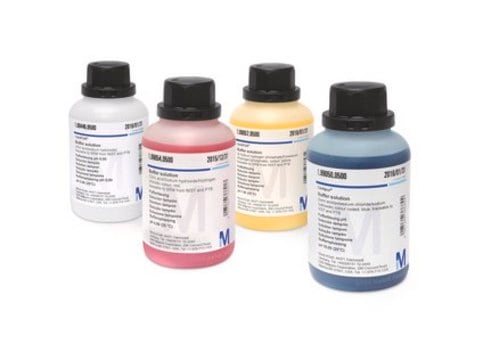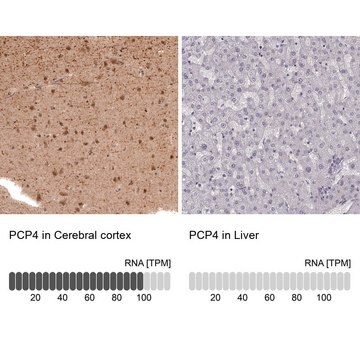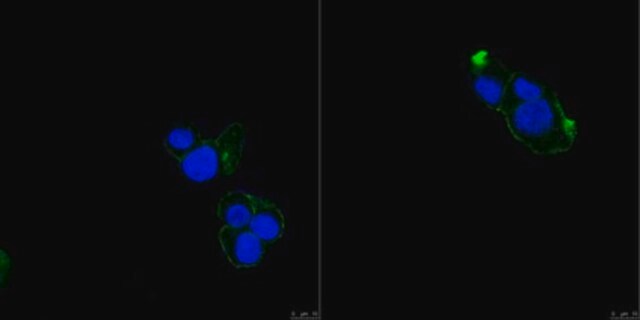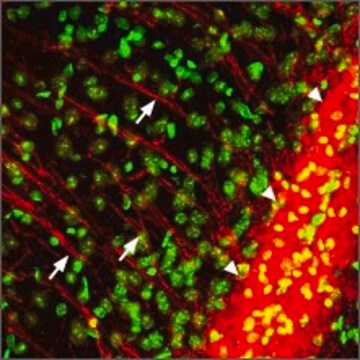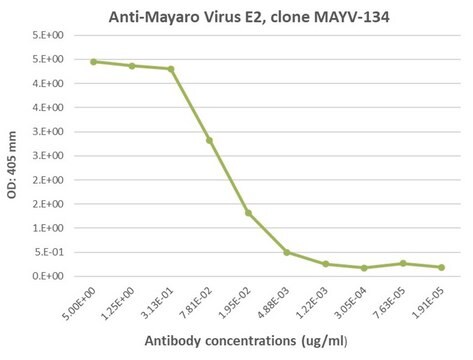MABS2312
Anti-STOM Antibody, clone GARP-50
Synonim(y):
Erythrocyte band 7 integral membrane protein;Erythrocyte membrane protein band 7.2; Protein 7.2b, Stomatin
About This Item
Polecane produkty
pochodzenie biologiczne
mouse
Poziom jakości
forma przeciwciała
purified antibody
rodzaj przeciwciała
primary antibodies
klon
GARP-50, monoclonal
masa cząsteczkowa
calculated mol wt 31.73 kDa
observed mol wt ~32 kDa
oczyszczone przez
using protein G
reaktywność gatunkowa
human
reaktywność gatunkowa (przewidywana na podstawie homologii)
bovine, horse, canine
opakowanie
antibody small pack of 100 μL
metody
electron microscopy: suitable
immunodiffusion: suitable
immunofluorescence: suitable
immunoprecipitation (IP): suitable
western blot: suitable
izotyp
IgG1κ
sekwencja epitopowa
N-terminal
numer dostępu Protein ID
numer dostępu UniProt
temp. przechowywania
2-8°C
docelowa modyfikacja potranslacyjna
unmodified
informacje o genach
human ... STOM(2040)
Opis ogólny
Specyficzność
Immunogen
Zastosowanie
Evaluated by Western Blotting in HeLa cell lysates.
Western Blotting Analysis: A 1:500 dilution of this antibody detected STOM in HeLa cell lysates.
Tested Applications
Electron Microscopy: A representative lot detected STOM in Immunoelectron Microscopy application (Feuk-Lagerstedt, E., et al. (2002). J Leukoc Biol. 72(5):970-7).
Immunoprecipitation Analysis: A representative lot immunoprecipitated STOM in Immunoprecipitation application (Snyers, L., et al. (1998). J Biol Chem. 273(27):17221-6; Snyers, L., et al. (1999). FEBS Lett. 449(2-3):101-4).
Immunoaffinity Purification: A representative lot was used to isolate STOM by immunoaffinity chromatography..(Hiebl-Dirshmied, C.M., et al. (1991). Biochim Biophys Acta. 1065(2):195-202; Salzer, U., et al. (1993). Biochim Biophys Acta. 1151(2):149-52).
Immunofluorescence Analysis: A representative lot detected STOM in Immunofluorescence application (Snyers, L., et al. (1997). Eur J Cell Biol. 73(3):281-5; Snyers, L., et al. (1999). Eur J Cell Biol. 78(11):802-12).
Western Blotting Analysis:
Western Blotting Analysis: A representative lot detected STOM in Western Blotting application (Hiebl-Dirshmied, C.M., et al. (1991). Biochim Biophys Acta. 1065(2):195-202; Snyers, L., et al. (1998). J Biol Chem. 273(27):17221-6; Snyers, L., et al. (1999). Eur J Cell Biol. 78(11):802-12; Snyers, L., et al. (1999). FEBS Lett. 449(2-3):101-4; Salzer, U., et al. (2001). Blood. 97(4):1141-3; Mairhofer, M., et al. (2002). Blood. 100(3):897-904; Feuk-Lagerstedt, E., et al. (2002). J Leukoc Biol. 72(5):970-7).
Note: Actual optimal working dilutions must be determined by end user as specimens, and experimental conditions may vary with the end user.
Postać fizyczna
Rekonstytucja
Przechowywanie i stabilność
Inne uwagi
Oświadczenie o zrzeczeniu się odpowiedzialności
Nie możesz znaleźć właściwego produktu?
Wypróbuj nasz Narzędzie selektora produktów.
Kod klasy składowania
12 - Non Combustible Liquids
Klasa zagrożenia wodnego (WGK)
WGK 1
Temperatura zapłonu (°F)
Not applicable
Temperatura zapłonu (°C)
Not applicable
Certyfikaty analizy (CoA)
Poszukaj Certyfikaty analizy (CoA), wpisując numer partii/serii produktów. Numery serii i partii można znaleźć na etykiecie produktu po słowach „seria” lub „partia”.
Masz już ten produkt?
Dokumenty związane z niedawno zakupionymi produktami zostały zamieszczone w Bibliotece dokumentów.
Nasz zespół naukowców ma doświadczenie we wszystkich obszarach badań, w tym w naukach przyrodniczych, materiałoznawstwie, syntezie chemicznej, chromatografii, analityce i wielu innych dziedzinach.
Skontaktuj się z zespołem ds. pomocy technicznej


